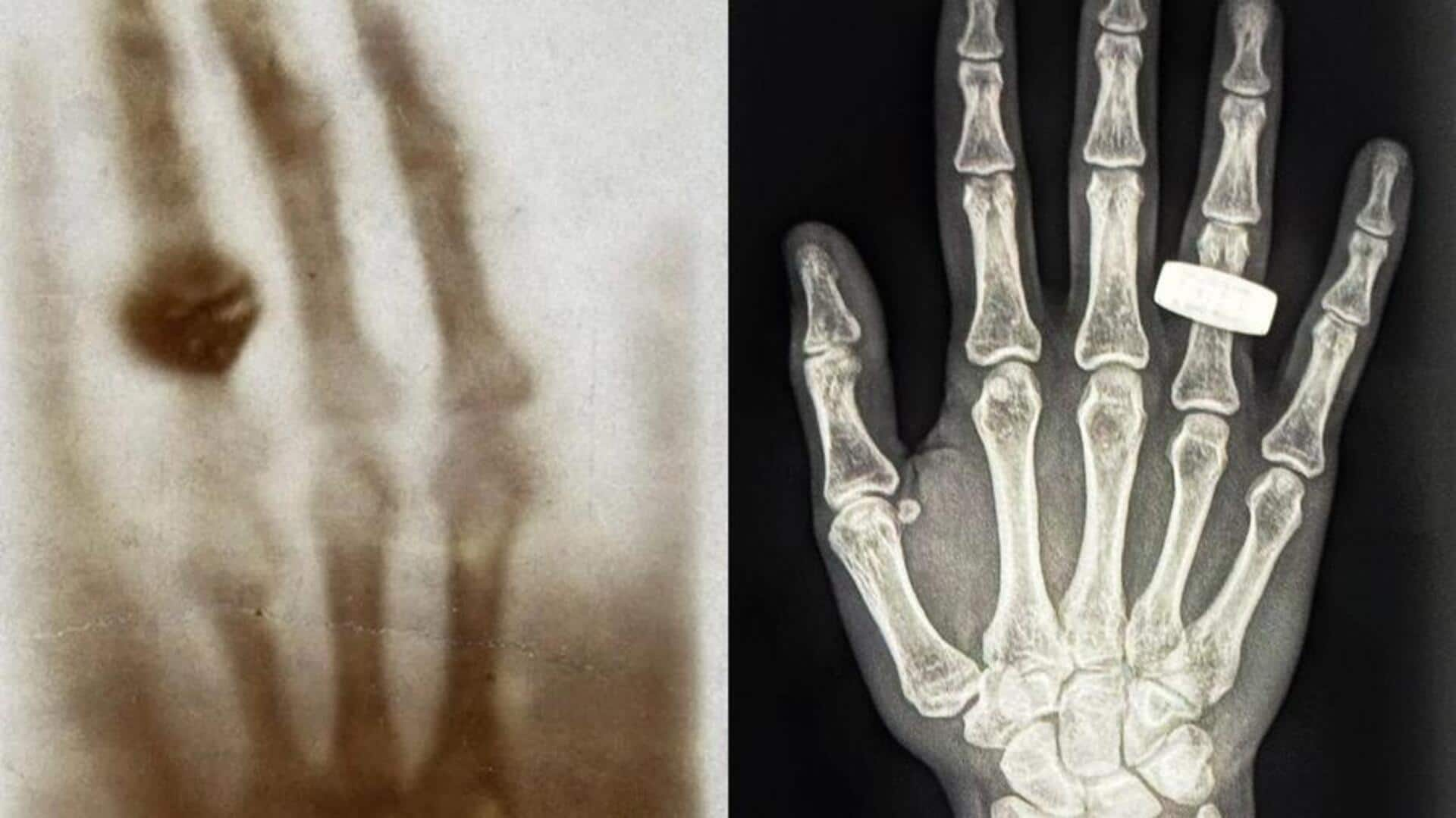
How astronauts took first X-ray in space—and why it matters
What's the story
Astronauts on SpaceX's Fram2 mission have captured the first medical X-ray ever taken in space.
The grayscale scan of a hand wearing a ring echoes Wilhelm Roentgen's original X-ray from 130 years ago.
This scan was performed in microgravity, inside a four-person capsule orbiting Earth at 28,000km/h and roughly 320km above the surface.
The X-ray was part of the SpaceXray experiment, one of 22 studies aboard Fram2—the first human mission to loop around the planet from pole to pole.
Hurdles
Challenges in taking X-ray in space versus here on Earth
Space-based X-ray imaging presents challenges in hardware, methods, and subject positioning.
Devices must be lightweight, miniaturized, and meet strict safety standards due to the confined environment.
The Fram2 team used a specialized X-ray system, originally built for military, and adapted it for space.
One concern was that cosmic radiation might blur image quality, but early results look promising.
Floating subjects also complicate alignment but Fram2 crew adopted procedures there were simple and foolproof for astronauts to manage independently.
Tech demonstration
Advanced X-ray imaging techniques demonstrated in space
After the successful hand X-ray, the Fram2 crew broadened their technology demonstration with more diagnostic images.
These included scans of the forearm, pelvis, abdomen, and chest.
The astronauts also tested electronics imaging to assess the use of X-rays as a hardware diagnostics tool. X-rays can help detect faults in spacecraft components without disassembly.
Additionally, the Fram2 astronauts performed a DXA (Dual-energy X-ray absorptiometry) scan during their mission. This is primarily used to measure bone mineral density (BMD).
Use case
X-ray in space: Why does it matter
Human spaceflight places unique stress on the body. Without gravity, blood and fluids shift upward, altering pressure in the brain and cardiovascular system.
Muscles weaken, bones lose calcium, and overall fitness declines.
While the Fram2 mission lasted only 3.5 days—too short for major changes—this was the first time X-ray has been used in space to track such effects.
This milestone allows real-time checks on bone loss, fluid buildup in the lungs, or signs of illness when astronauts are in space.